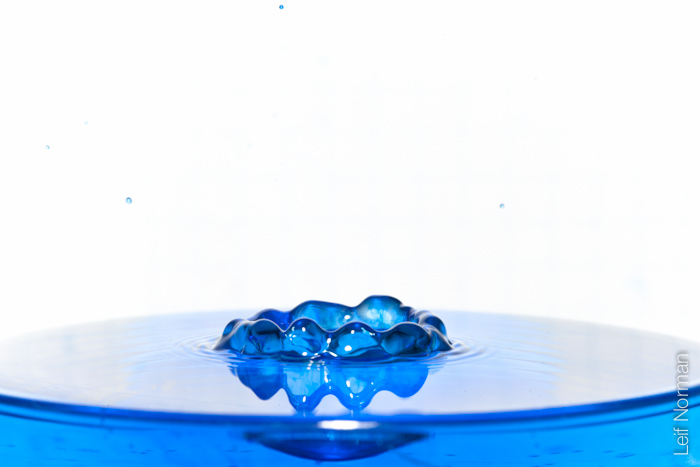So here is some news that only I care about; I bought two Elinchrom BX500Ri studio strobes and started playing around with, um flashing stuff.
You know; freezing motion.
And I then started studying the difference between the speed light AA battery powered flashes and the bigger plug in to the wall studio strobes.
Primarily I was looking at how the flash durations differ.
Flash duration is how long the flash strobes for, and therefore can act like a fast shutter and stop motion.
This is useful for stopping the motion of people leaping into the air. Which is a type of photography I might specialize in. Maybe.

This website was very helpful in explaining flash durations: http://www.scantips.com/speed2.html
It said that speed lights have shorter and shorter flash durations as you turn the power down.
In other words, full power strobes longer than lower 1/8 or 1/128 power.
The following list is from: http://www.photosbykev.com/wordpress/2008/07/12/canon-580ex-flash-duration/
Flash Durations for Canon 580 EX:
1/1 power = 1/1000 second
1/2 power = 1/2000
1/4 power = 1/4000
1/8 power = 1/9000
1/16 power = 1/15000
1/32 power = 1/21000
1/64 power = 1/30000
1/128 power = 1/35000
This is great for stopping things that are moving quite quickly, like water drops splashing, balloons popping, nuclear bombs exploding, children.
Here are some good high speed shots by Kev: http://www.photosbykev.com/wordpress/2008/06/25/high-speed-flash/
Actually Kev totally puts me to shame with his great droplet photos here.
And here is a link to some good info about high speed photography: http://en.wikipedia.org/wiki/High_speed_photography

Because of the thyristor circuit design in a speedlite the flash duration gets shorter and shorter as the flash gets weaker.
What happens is the batteries charge up the capacitor (the thingy that holds the voltage) and then lets out out just enough power to flash the tube. This allows the tube to be lit for a very short time when just a bit of voltage goes through it. The capacitor is only fully drained when flashed at full power, otherwise the capacitor allows the tube to be fired many times very quickly at lower powers such as 1/32 or 1/64.
In a 110AC (wall plug) studio flash the capacitor is charged up to the level at which the strobe is set. Full power will have the capacitor at full. When you tell the flash to fire at 1/8 power, the circuitry will charge the capacitor to 1/8 power and then fully dump the 1/8 capacitor to the flash tube when triggered.
And what they tell me is that the flash duration actually gets a bit longer as the power is turned down. Hmmm…
So you get what you get, right out of the box.
If you want a shorter flash duration on a studio flash you can not “set” it in any way to do so. You simply have to buy the right flash that has a short flash duration.
My Elinchrom BX500Ri flash heads have a flash duration of 1/1560 sec at full power. Not bad. That compares with a 580Ex at half power according to the list above, but the Elinchrom is about three times brighter. Woo!
To get shorter studio flash durations you would have to get quite expensive studio flashes. (over $2000 is quite expensive for me)
Anyhoo, the long and short of it is, I was playing around with my Canon 580EX ll and some milk, clear water and food coloured water at a very low power, and therefore a very short flash duration, and got some nice trippy photos of splashes.
Equipment:
Canon 5D mark ll.
Canon 100 mm f2.8 macro lens. (ISO 200, f11, flash set to 1/64 power)
Canon 580Ex ll flash on an off camera shoe cord.
Eye dropper.
Razor sharp reflexes and lots of trial and error.







